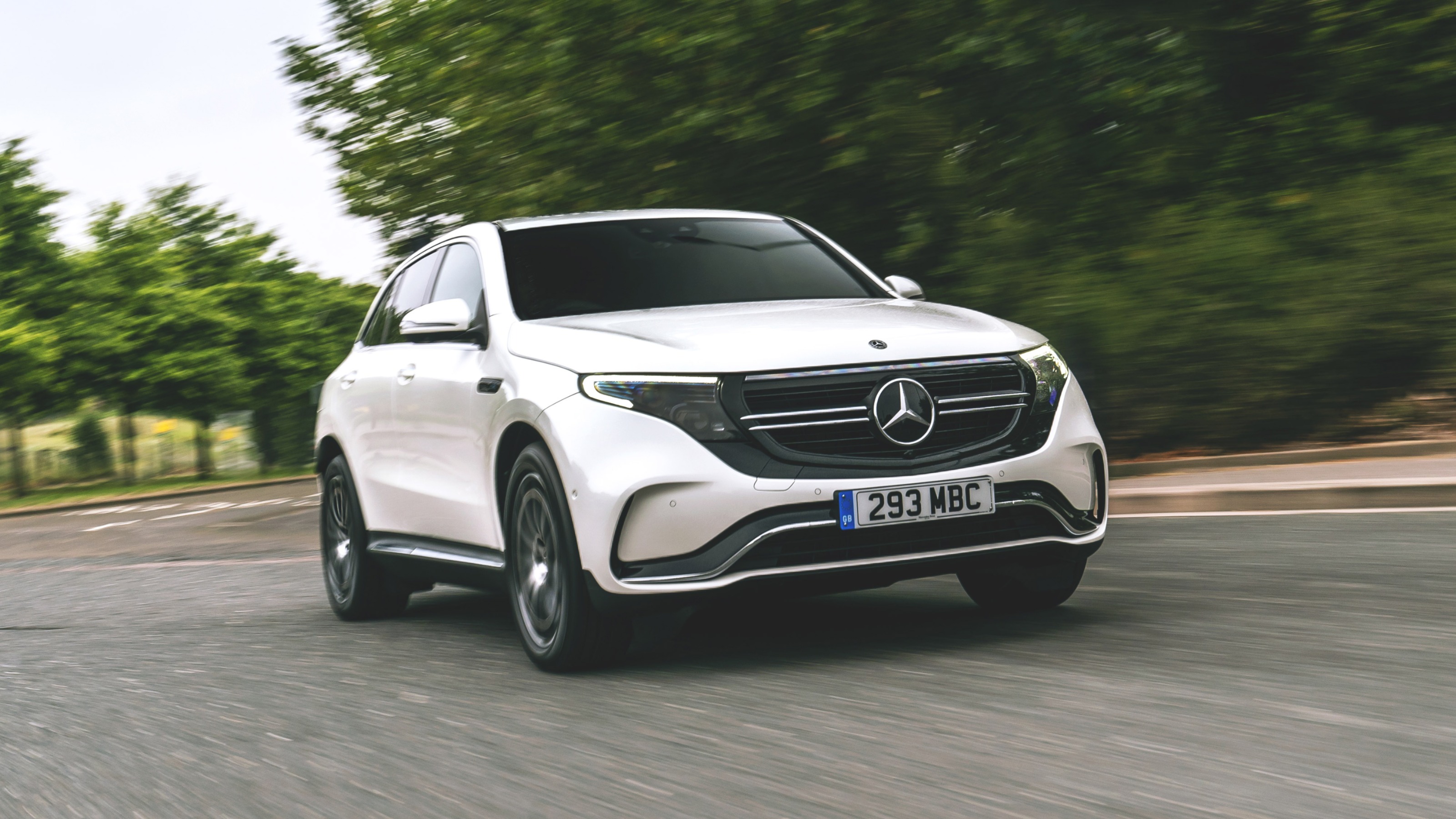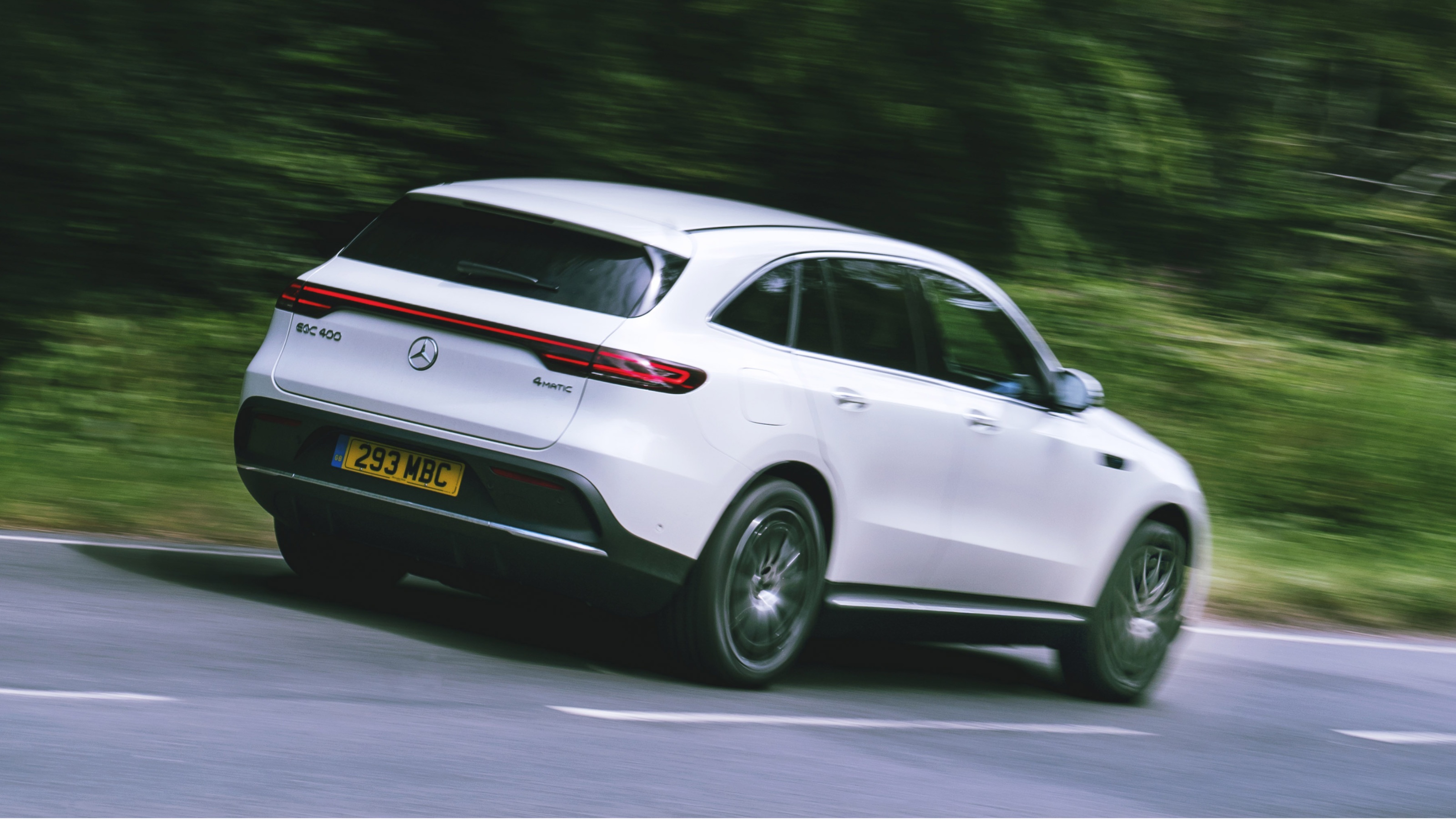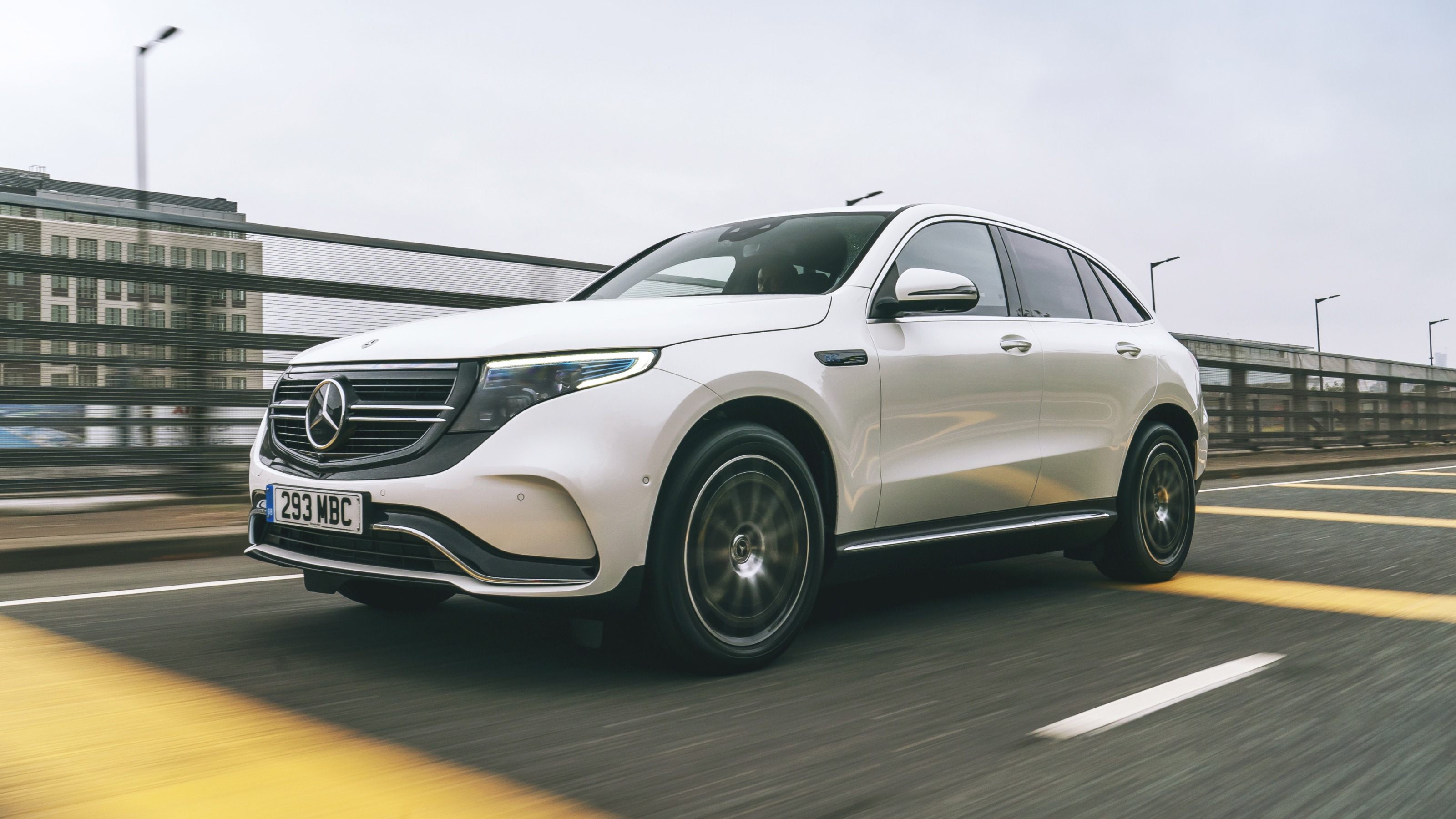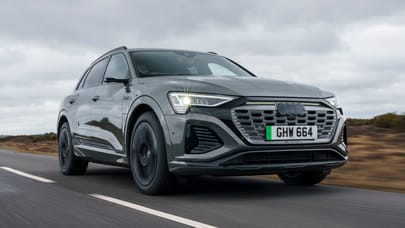
Mercedes-Benz EQC review
Good stuff
Super-refined, comfy, smooth and safe. Good bundled charging and payment apps
Bad stuff
Compromised platform and design, heavy, weak range, smartphone connectivity ain't standard
Overview
What is it?
If you've ever been in one of Mercedes' many SUVs, the EQC will feel very much like them, except with silent electric power. Because that's what it is. For its first mainstream EV, Mercedes didn’t reinvent the car. It simply electrified a car. Specifically, the GLC.
Take out the combustion engine, exhaust and fuel tank, and the transmission. Insert two drive motors, one in front and one behind, and an underfloor battery. That's the basic concept anyway (and one it has steered clear of since with bespoke creations like the EQE SUV), but of course thousands of details have changed, and there's a new ever-so-slightly futuristic visual skin for the exterior and interior of the EQC.
So how different is it to the GLC?
Both outside and inside, the EQC has very similar proportions to the GLC. It doesn't have a spacey cab-forward design or a lightweight aluminium bodyshell. You don't have to get used to it, and you won't look like you're driving around in a science experiment.
It might seem timid for Mercedes to have adapted an existing platform rather than scratch-build a new one, but at least they sweated the details on the body, motors, thermal systems and electronics. The aims – successfully met in our first experience – were silence, efficiency and safety.
Although because it was among the first wave of posh electric crossovers that arrived in 2019, the EQC actually now lags behind its facelifted GLC sibling in terms of interior tech and design.
It's also quite small compared to its immediate competition. The Jaguar I-Pace is similar in footprint but has a significantly longer wheelbase to improve cabin room. The original Audi e-tron is bigger, and the (now left-hand drive only) Tesla Model X far bigger. And yet the Mercedes is the heaviest of the lot, at two-and-a-half tonnes.
That doesn't sound like a good thing.
Here's why. The EQC has the same suspension and most of the underbody as the GLC. To make sure it behaves in the same protective way in a crash, it even has steel-tube replicas of the combustion car's engine block and gearbox housing, except here they mostly enclose fresh air rather than pistons and gears. So you don't get the airy cabin or flat floor of a Tesla or Jaguar.
The EQC's chief engineer gladly admits that because it's thus adapted, it's 150kg heavier than it would be if it were entirely bespoke (although somehow the newer EQE weighs 2.6 tonnes despite sitting on a purpose-built EV platform). He claims weight doesn't greatly affect range because you can regenerate more from a heavy car – here it's up to 240bhp feeding back into the battery. Instead, what matters is low drag, and the EQC gets a Cd of just 0.28.
How big is the battery, out of interest?
Just as well it's a low-drag car, since the battery doesn't have a huge capacity at 80kWh gross. Mercedes is big on safety, so it's made the EQC's battery narrower than rivals. It doesn't spread right out to the sills but instead has about 10cm of extra impact-absorbing structure either side. The range is 259 miles WLTP, depending on wheels (some low-drag ones are available) and the rather funky running boards (which actually improve matters).
How much does it cost?
Great question. The EQC has been on sale for a while now, but in mid-2023 prices start at £74,330, with monthly deals at around £649 per month. There’s just one powertrain and battery option, but three different trim levels to choose from in the UK – all of which fit an AMG Line styling package with varying levels of extra tech and leather.
Our choice from the range

What's the verdict?
Mercedes was very cautious with its first electric car, well its first mainstream one that is – the SLS Electric Drive could hardly be considered mainstream or cautious. By using an adapted GLC platform there aren't the gains in revolutionary style, range or cabin space you'd hope for from an EV SUV. And the EQC is hardly sporty to drive either, despite the presence of over 400bhp.
But the detail of its refined drivetrain and chassis makes this a relaxing car to drive or ride in. And Merc has done all it can to ease the transition to finding energy from power points not petrol stations. It’s looking a little dated already, particularly from the driver’s seat, but some will prefer that over the Hyperscreens and ‘autonomous driving’ that we’re saddled with just a few years after the EQC’s arrival.
There are probably better options at this price point in 2023, but for those that want the most ‘normal’ EV possible, the EQC will still have some appeal.
The Rivals
Trending this week
- Car Review
Mazda 6e










